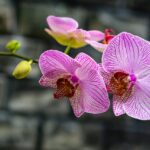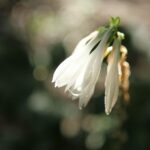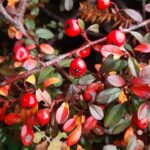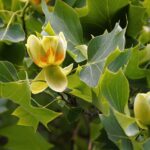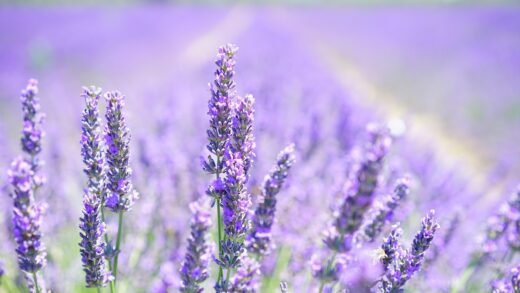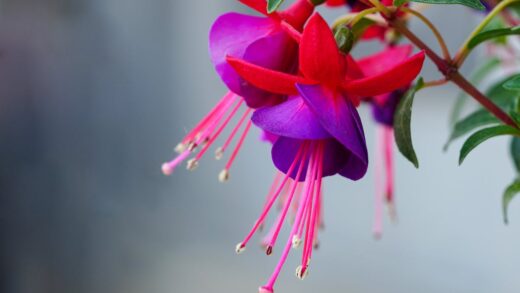The Manchu rose, or by its scientific name Rosa xanthina, is a captivatingly beautiful rose species native to China, drawing attention with its vibrant yellow, early spring blooms. However, for this special ornamental plant to shine in its most beautiful form year after year, ensuring an adequate supply of nutrients is essential. A balanced nutrient supply is not only the key to abundant flowering but also fundamentally determines the plant’s overall health and resistance to diseases and pests. Proper fertilization is an investment that pays off in the vitality and longevity of the rose bush, allowing it to remain a jewel of the garden. Understanding the correct ratio and timing of nutrients is crucial for its successful care.
For plants, nutrients are like food for humans; they are indispensable for growth, development, and reproduction. In the case of the Manchu rose, a lack of nutrients can lead to pale, weak foliage, stunted shoot growth, and most importantly, a lack or scarcity of flowering. Conversely, excessive nutrient intake, especially an overdose of nitrogen, stimulates excessive, weak growth of shoots at the expense of flowers and makes the plant more susceptible to fungal diseases such as powdery mildew. Proper fertilization practice, therefore, creates a balance that provides optimal conditions for the plant. Mastering this does not require a degree in horticulture, just a little attention and an understanding of the plant’s signals.
Soil quality is a fundamental factor in the nutrient uptake of the Manchu rose. A well-structured soil rich in organic matter can store nutrients more effectively and make them available to the plant’s roots. Before starting any fertilization program, it may be worthwhile to conduct a soil test to get an accurate picture of the soil’s pH and nutrient content. The Manchu rose prefers slightly acidic to neutral soils (pH 6.0-7.0), as it can most effectively absorb most essential elements in this range. If the soil is too acidic or alkaline, nutrient uptake can be inhibited, even if they are present in sufficient quantities.
When planning nutrient supplementation, the plant’s life cycle and the changing seasons must be taken into account. During the intensive growth period in spring, when shoots and leaves are developing, different nutrient ratios are needed than during the peak flowering period in summer or the autumn preparatory period for the winter dormancy. Consciously planned fertilization is not a one-time act but a year-long process adapted to the plant’s needs. Understanding and applying this process ensures that the Manchu rose shows its most magnificent face every year and is resistant to environmental stress.
The role of essential nutrients
The Manchu rose, like all other plants, relies primarily on three main macronutrients in the largest quantities: nitrogen (N), phosphorus (P), and potassium (K). Nitrogen is responsible for the vigorous growth of vegetative parts, namely the leaves and shoots. In spring, during the budding period, an adequate nitrogen supply is particularly important to ensure the development of lush, healthy foliage. Phosphorus plays a crucial role in root formation, flower and bud development, and energy metabolism processes. An adequate supply of phosphorus is essential for abundant flowering, promoting the formation of large, brightly colored flowers. Potassium is responsible for the plant’s overall hardiness, resistance to diseases, and regulation of water management, and it contributes to the development of strong, sturdy stems.
In addition to macronutrients, secondary elements such as calcium (Ca), magnesium (Mg), and sulfur (S) are also indispensable. Calcium ensures the stability of cell walls and contributes to the healthy development of the root system; its deficiency can lead to distortion of young shoots and leaves. Magnesium is the central atom of the chlorophyll molecule, thus playing a fundamental role in photosynthesis, the process of capturing sunlight energy. In case of magnesium deficiency, the leaves show a characteristic yellowing between the veins, which impairs the plant’s assimilation capacity. Sulfur is a building block of many amino acids and proteins and is also involved in the plant’s defense mechanisms.
We must not forget about micronutrients, which, although needed by the plant in only small quantities, their deficiency can still cause serious physiological disorders. For the Manchu rose, the most important micronutrients are iron (Fe), manganese (Mn), zinc (Zn), boron (B), and copper (Cu). Iron, like magnesium, is essential for chlorophyll synthesis; its deficiency causes a bright yellow chlorosis of young leaves, while the leaf veins remain green. Manganese and zinc are important activators of enzymes that regulate growth and metabolic processes. Boron plays a role in cell division and pollen tube development, so it is also necessary for fertilization and rose hip formation.
The balance between nutrients is at least as important as their mere presence. An excessive amount of one nutrient can inhibit the uptake of another, a phenomenon called antagonism. For example, excessive potassium intake can inhibit the uptake of magnesium and calcium, while too much phosphorus can hinder iron and zinc uptake. Therefore, the use of balanced, complex fertilizers that contain macro-, secondary, and micronutrients in the correct proportions is recommended. Organic fertilizers, such as mature compost or manure, naturally provide this balance while also improving soil structure.
Timing and methods of fertilization
The basis for developing a fertilization strategy is the knowledge of the annual growth cycle of the Manchu rose. The first and most important nutrient application is in early spring, just before or at the time of bud break. During this period, a balanced fertilizer with a higher nitrogen content, but also containing phosphorus and potassium, or mature organic fertilizer is recommended. This dose provides the energy for the development of new shoots and lush foliage, laying the foundation for year-round growth. Organic fertilizers, such as compost or aged cow manure, should be shallowly worked into the soil around the base of the plant, being careful not to let it directly touch the root collar.
Before and during the flowering period, which for the Manchu rose is typically in late spring and early summer, the emphasis shifts to phosphorus and potassium. A fertilizer with a higher phosphorus and potassium content, a so-called flowering booster, helps promote abundant bud formation and maintain the vibrant color of the flowers. This nutrient supplementation can be repeated every 4-6 weeks until the end of flowering, either in granular form sprinkled on the soil or applied as a water-soluble plant food. It is important to always water granular fertilizer in thoroughly so that the nutrients reach the root zone and do not burn the plant.
In late summer and early autumn, after flowering has finished, the fertilization practice must be changed again. During this period, high-nitrogen preparations should be avoided as they would stimulate the growth of new, weak shoots that would easily freeze back during the winter. Instead, the use of a potassium-rich autumn fertilizer is recommended. Potassium promotes the ripening of the canes, increases the plant’s frost tolerance, and prepares it for the winter dormancy period. This final nutrient application helps the rose to enter the next spring strong and healthy.
Regarding the method of application, one can choose between solid, granular fertilizers and liquid plant foods. Granules dissolve slowly and gradually, providing nutrients over a longer period, making them ideal for the base fertilization in spring. Liquid plant foods can be absorbed more quickly by the plant, making them excellent for treating deficiency symptoms that require rapid intervention or for targeted feeding during the flowering period. There is also the option of foliar feeding, where a diluted nutrient solution is sprayed directly onto the leaves, which can be particularly effective for quickly correcting micronutrient deficiencies, but this is more of a supplementary method than a substitute for soil fertilization.
Symptoms and treatment of nutrient deficiency and excess
Recognizing nutrient deficiencies is possible based on the characteristic symptoms that appear on the leaves, allowing for quick and targeted intervention. The most common is nitrogen deficiency, which manifests as a uniform yellowing of the older, lower leaves and the overall stunted growth of the plant. In such cases, a fast-acting, nitrogen-rich liquid feed or foliar fertilizer can provide immediate help. In contrast, iron deficiency, which is common in calcareous, high-pH soils, appears on the youngest, terminal shoots as a sharp, interveinal yellowing (chlorosis), while the leaf veins remain green. This problem can be most effectively remedied with preparations containing iron chelate, which can be applied to the soil or foliage.
Phosphorus deficiency is more difficult to identify; the plant often just grows weakly, and the leaves may take on a bluish-green or purplish hue, especially at the leaf margins. A lack of flowering or few, small flowers can also indicate a phosphorus deficiency, which can be corrected by applying a phosphorus-rich fertilizer (e.g., superphosphate). The symptoms of potassium deficiency typically manifest as yellowing, then browning, necrotic spots appearing on the edges of older leaves. The stems may be weak, the flowers may be pale, and the plant becomes more susceptible to stress and diseases. The deficiency can be eliminated by using potassium-rich fertilizers, such as potassium sulfate.
A characteristic symptom of magnesium deficiency is a marbled or fir-branch-like yellowing between the veins on older leaves, while a green V-shaped band remains along the veins. This symptom can be easily confused with iron deficiency, but an important difference is that magnesium deficiency appears first on older leaves, while iron deficiency appears on younger leaves. The problem can be quickly remedied with a solution of Epsom salt (magnesium sulfate), applied as a liquid feed or foliar spray. Deficiencies of micronutrients like boron or manganese are less common but can cause distorted leaf and flower development and dieback of terminal buds; their treatment is most effective with complex foliar fertilizers that also contain micronutrients.
Nutrient excess, or over-fertilization, can be at least as harmful as a deficiency. Excessive nitrogen intake results in lush, dark green foliage at the expense of flowering, the shoots become elongated, weak, and susceptible to aphids and fungal diseases. The high salt concentration in the soil caused by over-fertilization can “burn” the roots, leading to browning and drying of the leaf edges and sudden wilting of the plant. In such cases, the most important thing is to immediately suspend fertilization and to water the soil abundantly to leach the excess salts from the root zone. Prevention is key here as well: always follow the dosage instructions on the fertilizer packaging, and it is better to give too little than too much.


